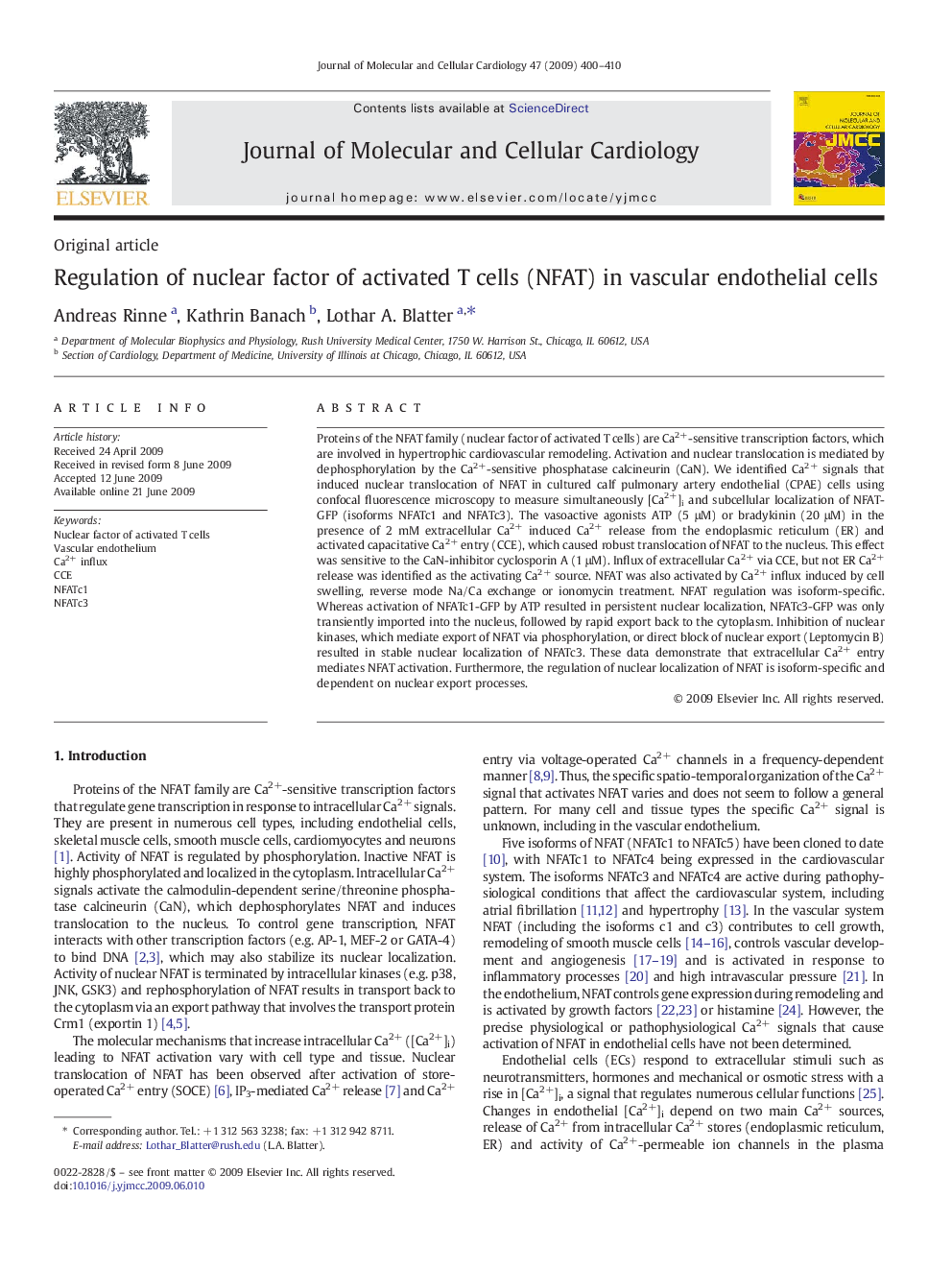| Article ID | Journal | Published Year | Pages | File Type |
|---|---|---|---|---|
| 10954239 | Journal of Molecular and Cellular Cardiology | 2009 | 11 Pages |
Abstract
Proteins of the NFAT family (nuclear factor of activated T cells) are Ca2+-sensitive transcription factors, which are involved in hypertrophic cardiovascular remodeling. Activation and nuclear translocation is mediated by dephosphorylation by the Ca2+-sensitive phosphatase calcineurin (CaN). We identified Ca2+ signals that induced nuclear translocation of NFAT in cultured calf pulmonary artery endothelial (CPAE) cells using confocal fluorescence microscopy to measure simultaneously [Ca2+]i and subcellular localization of NFAT-GFP (isoforms NFATc1 and NFATc3). The vasoactive agonists ATP (5 μM) or bradykinin (20 μM) in the presence of 2 mM extracellular Ca2+ induced Ca2+ release from the endoplasmic reticulum (ER) and activated capacitative Ca2+ entry (CCE), which caused robust translocation of NFAT to the nucleus. This effect was sensitive to the CaN-inhibitor cyclosporin A (1 μM). Influx of extracellular Ca2+ via CCE, but not ER Ca2+ release was identified as the activating Ca2+ source. NFAT was also activated by Ca2+ influx induced by cell swelling, reverse mode Na/Ca exchange or ionomycin treatment. NFAT regulation was isoform-specific. Whereas activation of NFATc1-GFP by ATP resulted in persistent nuclear localization, NFATc3-GFP was only transiently imported into the nucleus, followed by rapid export back to the cytoplasm. Inhibition of nuclear kinases, which mediate export of NFAT via phosphorylation, or direct block of nuclear export (Leptomycin B) resulted in stable nuclear localization of NFATc3. These data demonstrate that extracellular Ca2+ entry mediates NFAT activation. Furthermore, the regulation of nuclear localization of NFAT is isoform-specific and dependent on nuclear export processes.
Related Topics
Life Sciences
Biochemistry, Genetics and Molecular Biology
Cell Biology
Authors
Andreas Rinne, Kathrin Banach, Lothar A. Blatter,
